Georges Vanier Elementary 24-25
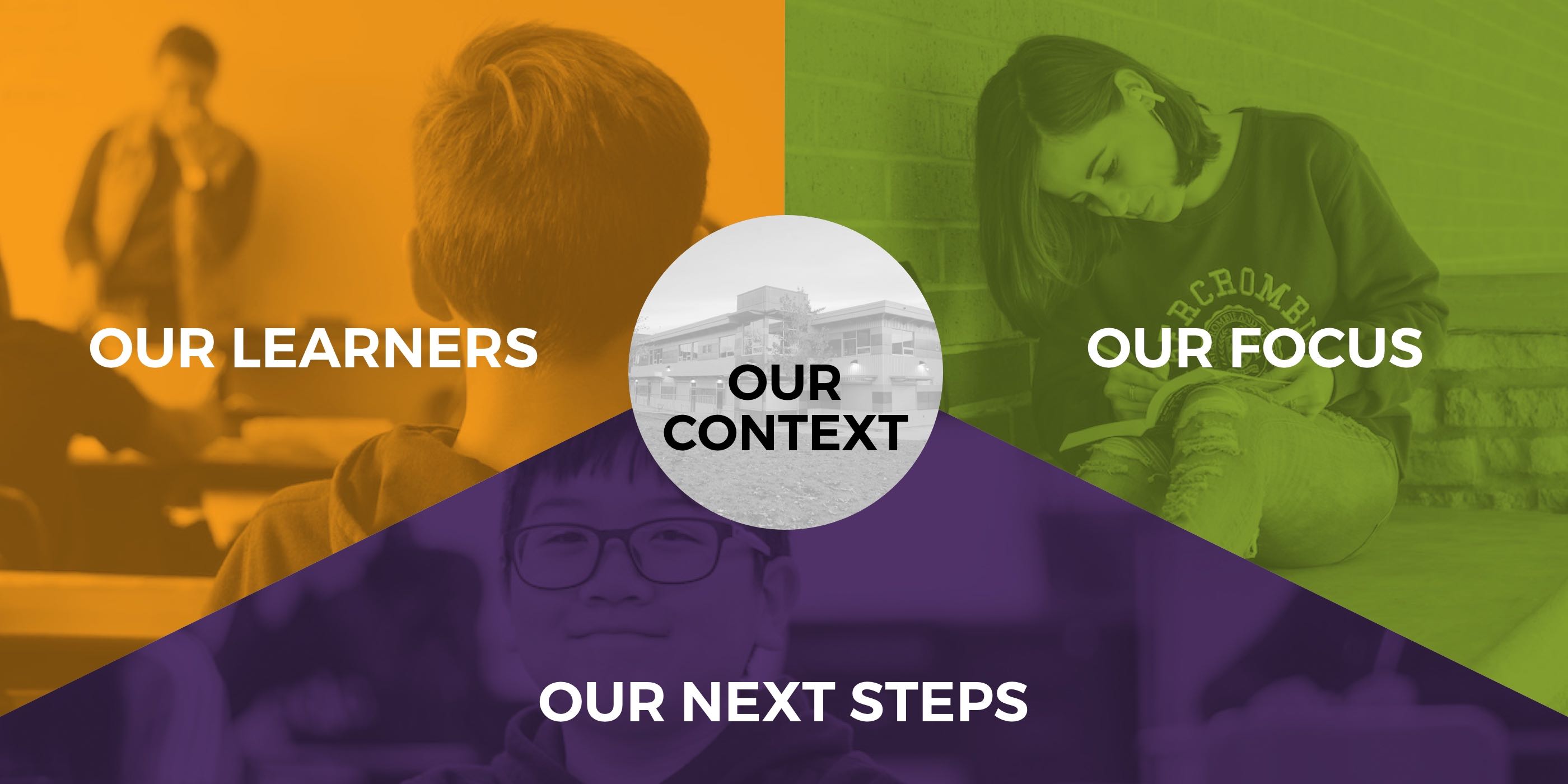

OUR CONTEXT
OUR LEARNERS
At Georges Vanier, our Student Learning Plan is deeply rooted in fostering strong literacy skills, with a particular emphasis on developing proficient readers. We are committed to equipping our students with the essential decoding and comprehension strategies necessary to navigate and engage meaningfully with a diverse range of texts. This focus is paramount because we believe that strong literacy is the foundation for all future learning and success, directly supporting the development of the Core Competencies of BC’s curriculum. By engaging with diverse texts, students not only enhance their reading abilities but also develop critical thinking skills, analyzing information and forming informed opinions. Through shared reading experiences and discussions, they strengthen their communication skills, learning to articulate their thoughts and listen respectfully to others. Moreover, exploring stories and perspectives from various cultures and backgrounds fosters personal & social responsibility, empathy, and an understanding and appreciation of our diversity. By empowering our students to become confident and capable readers, we are opening doors to knowledge, critical thinking, and lifelong learning, ensuring they can thrive in an increasingly complex and information-rich world, and contribute meaningfully to our diverse community.
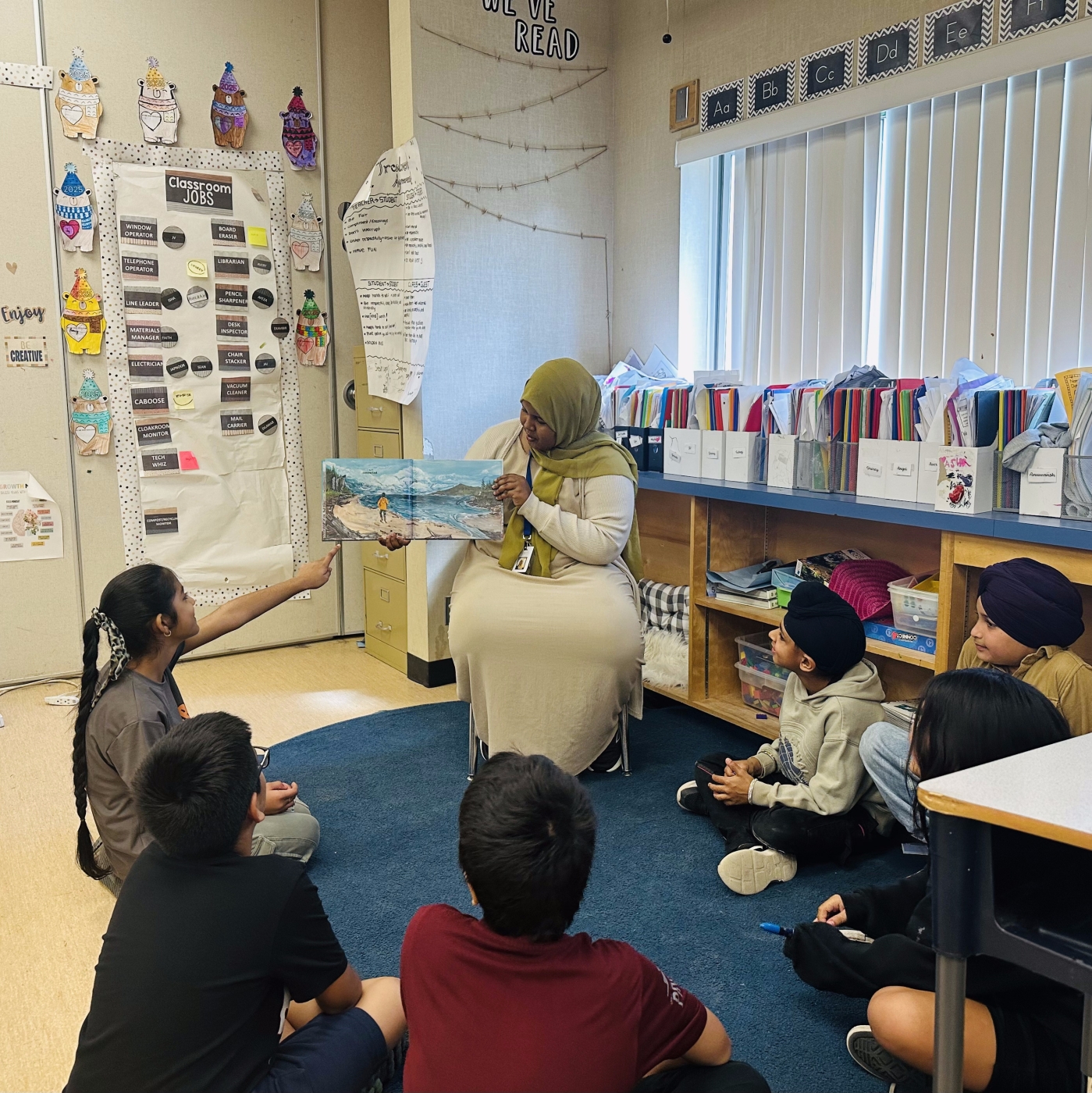 | 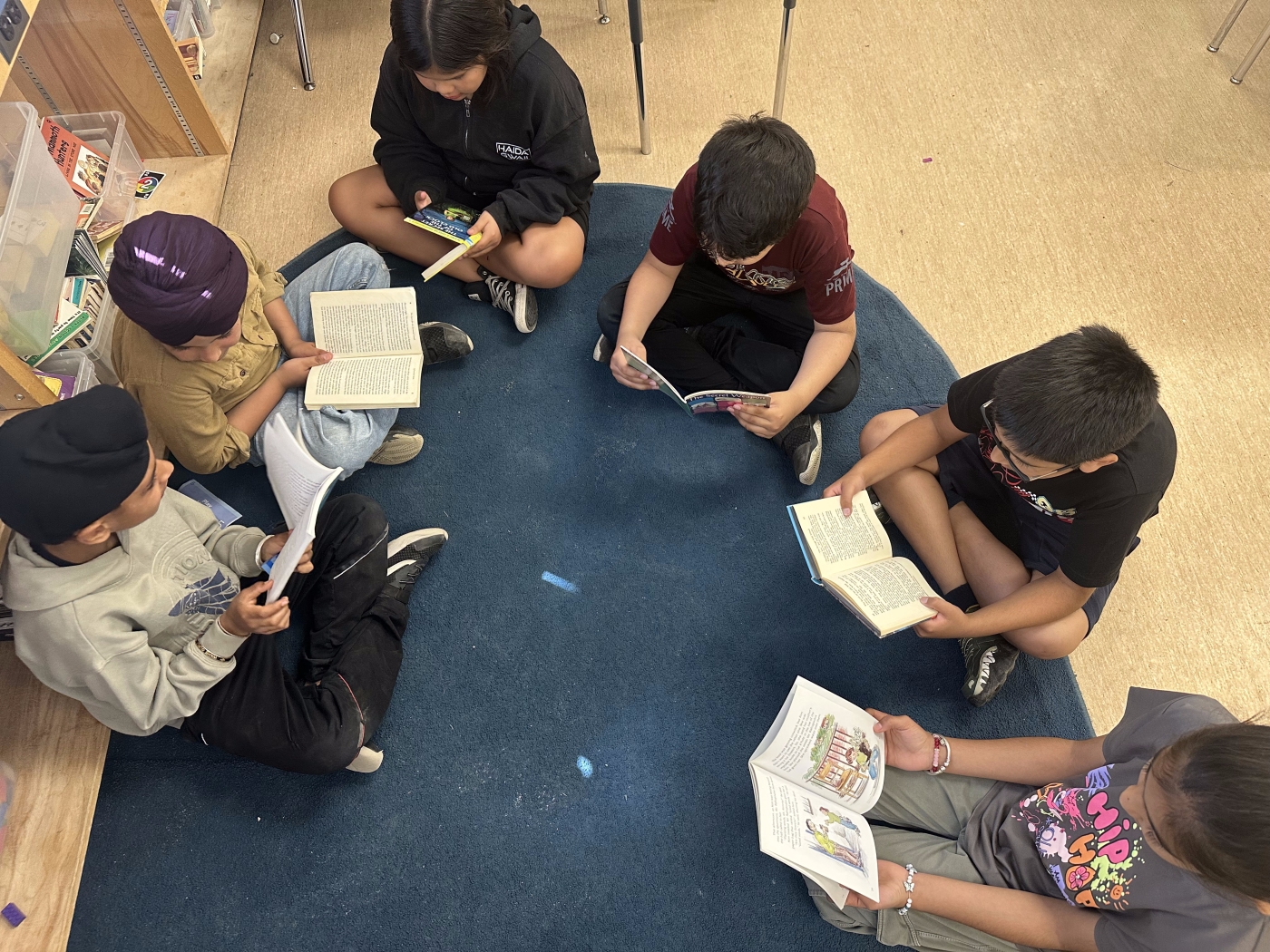 |
Our learners can sound out challenging words and understand what they mean in different stories and books. |
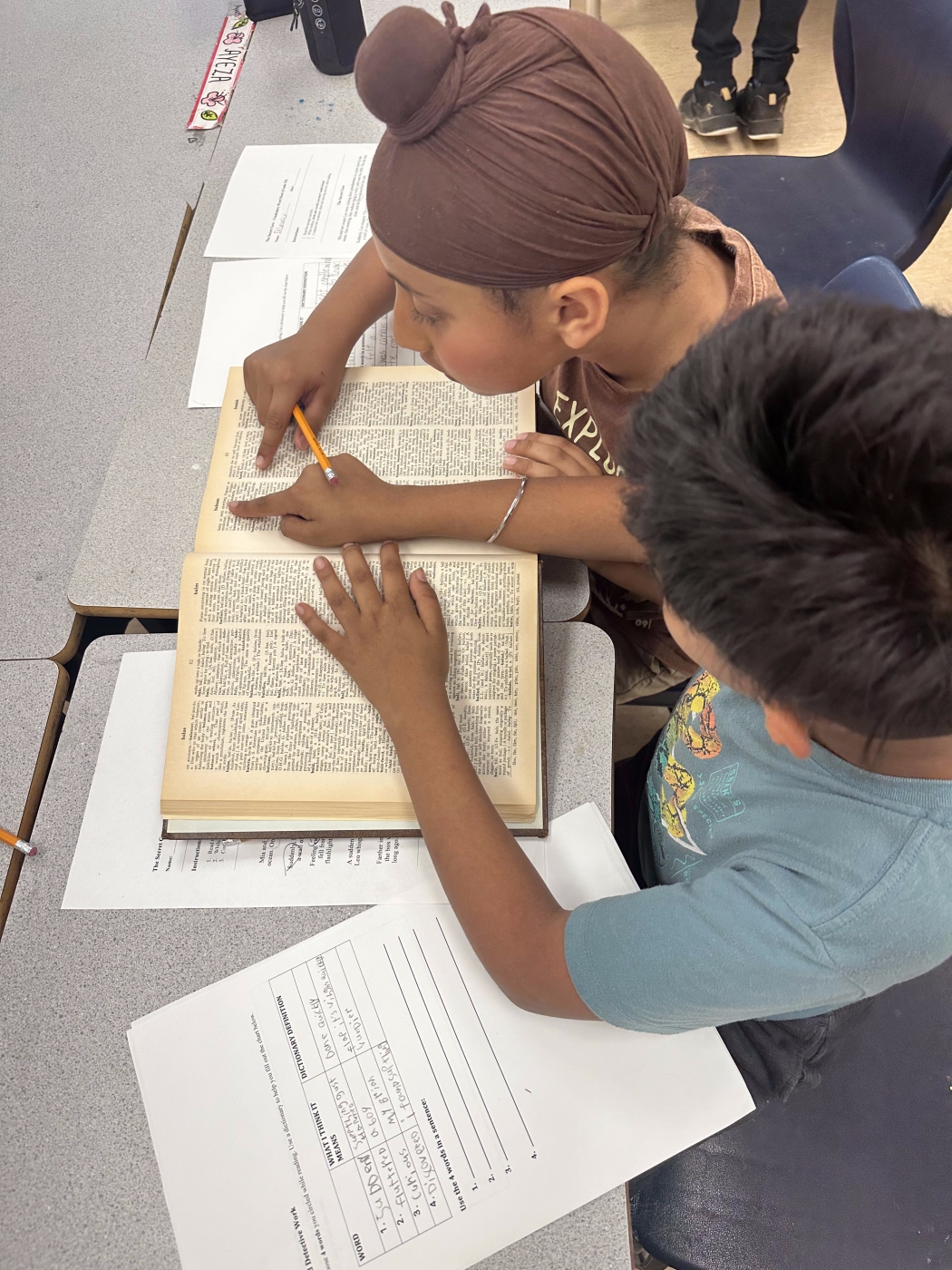 | 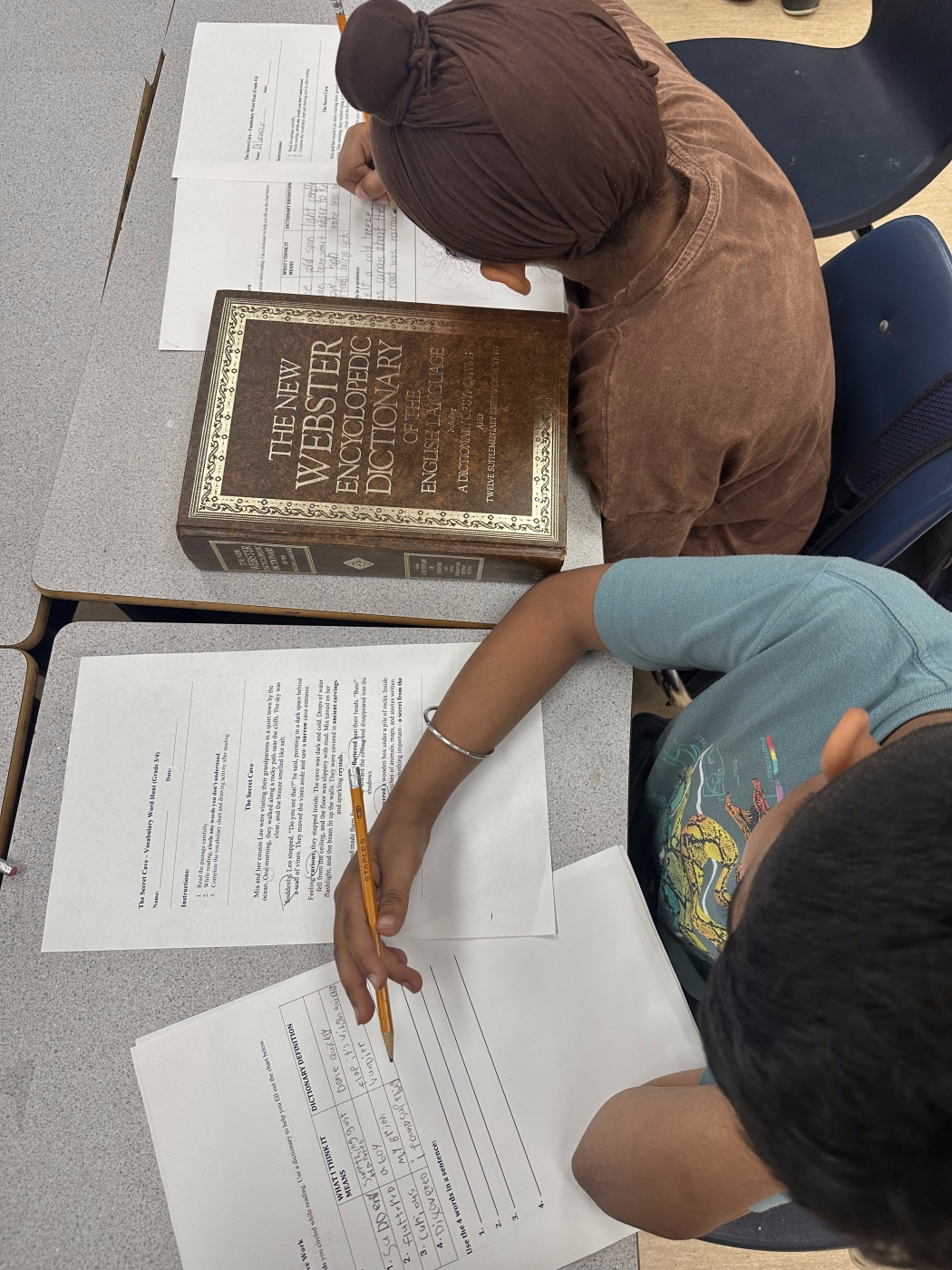 |
Our learners can think carefully about what they read and share their ideas about the information. |
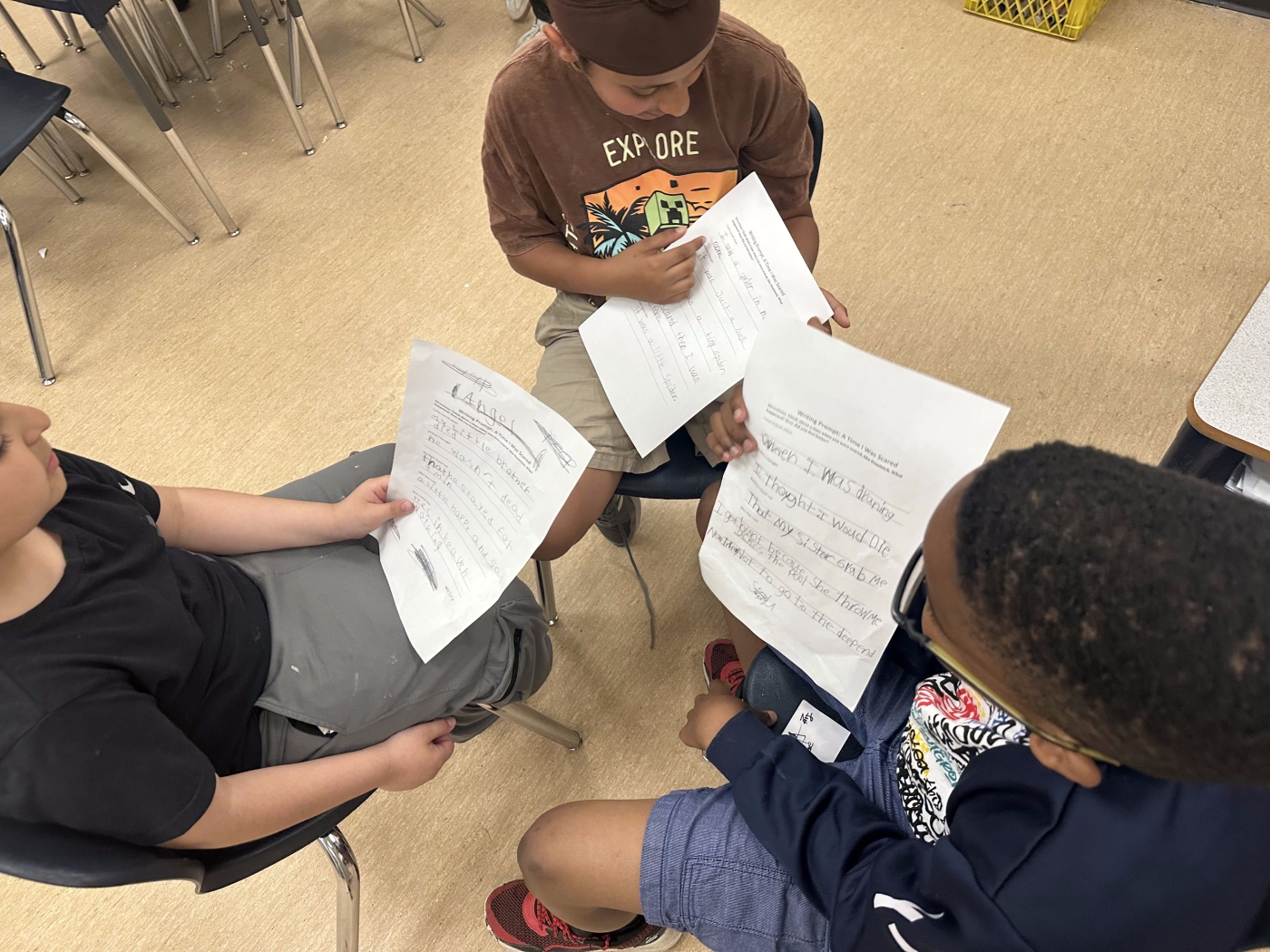 | 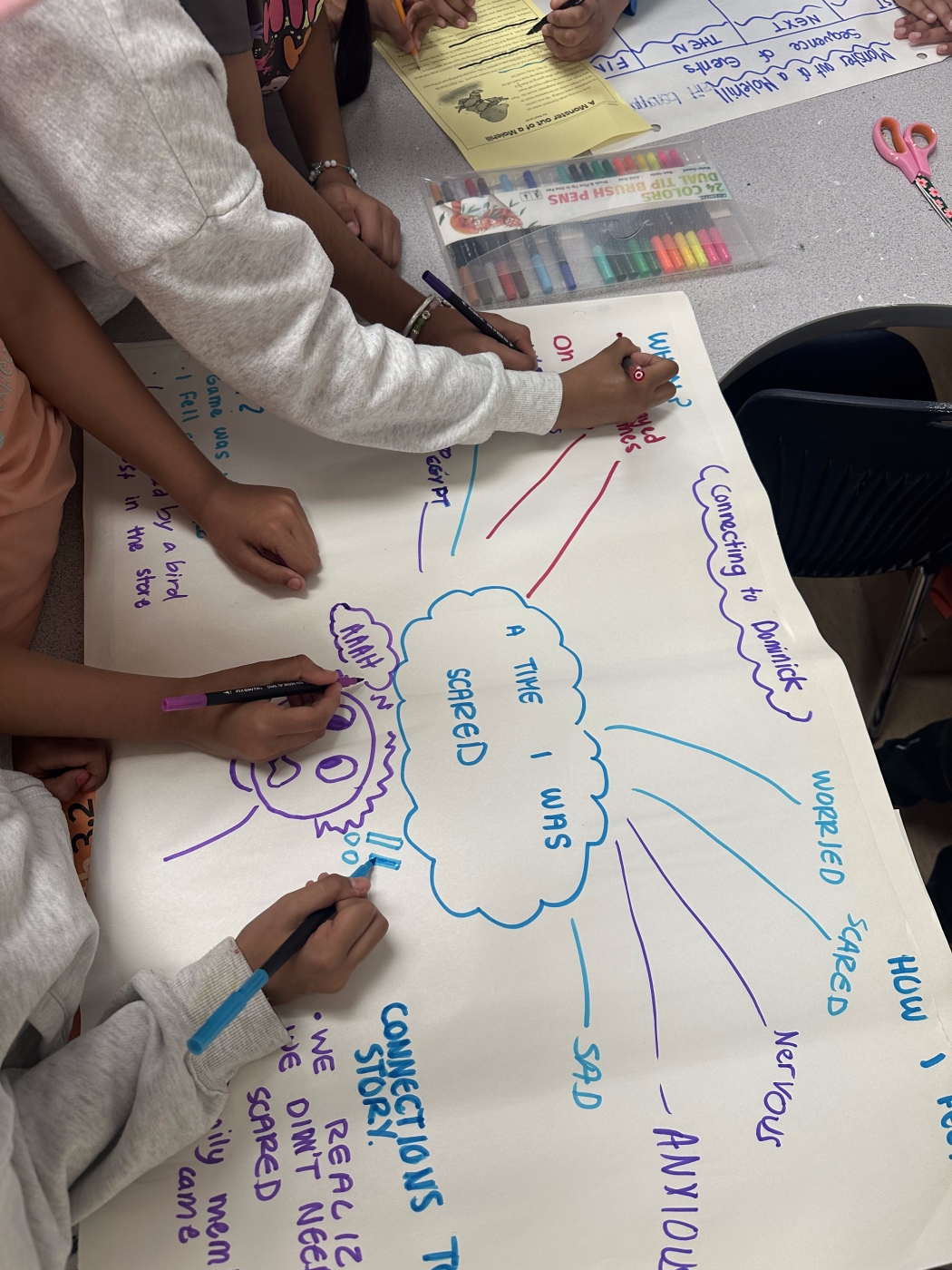 |
Our learners can understand and respect different ideas and feelings from stories and other texts. |
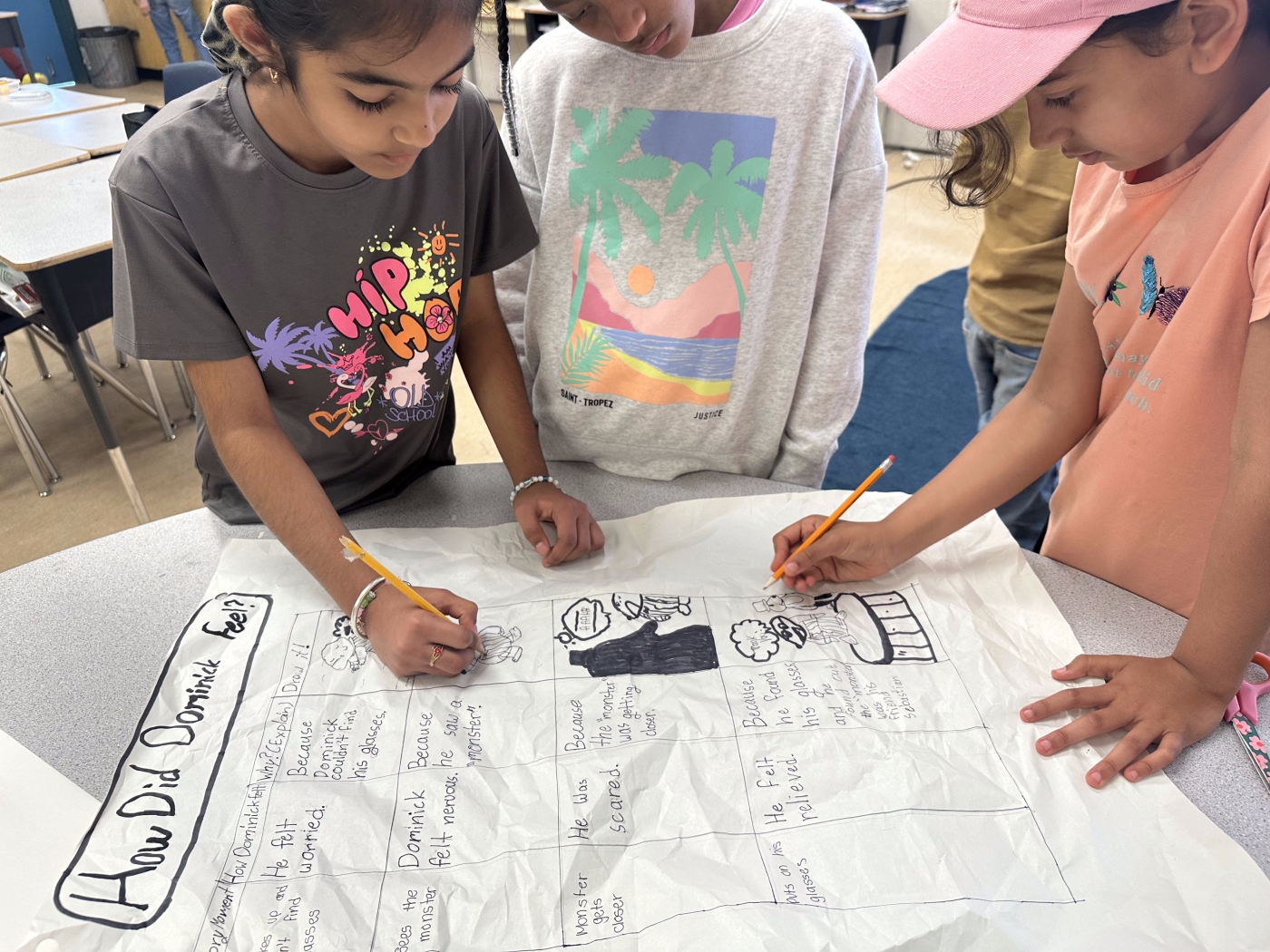 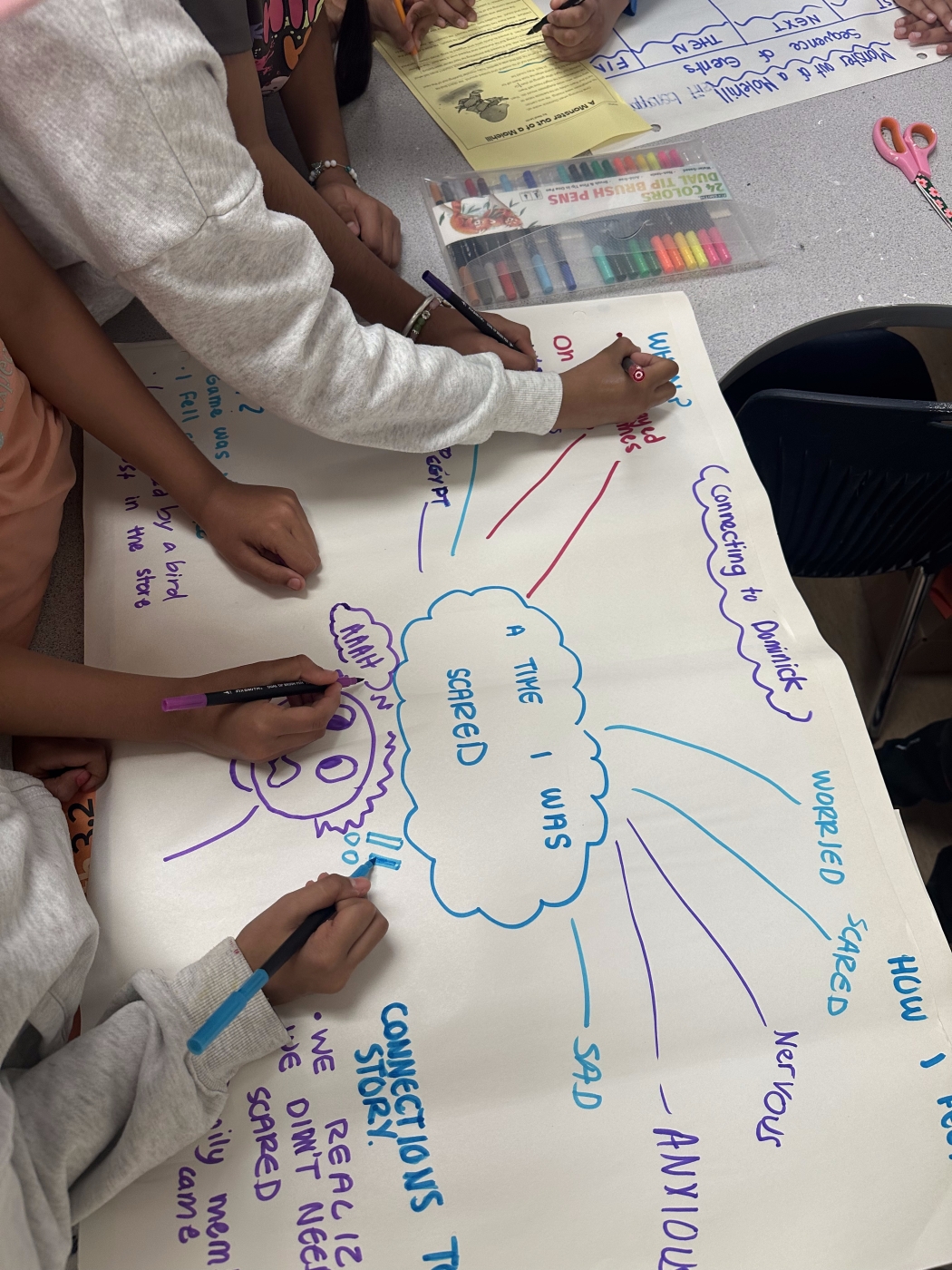 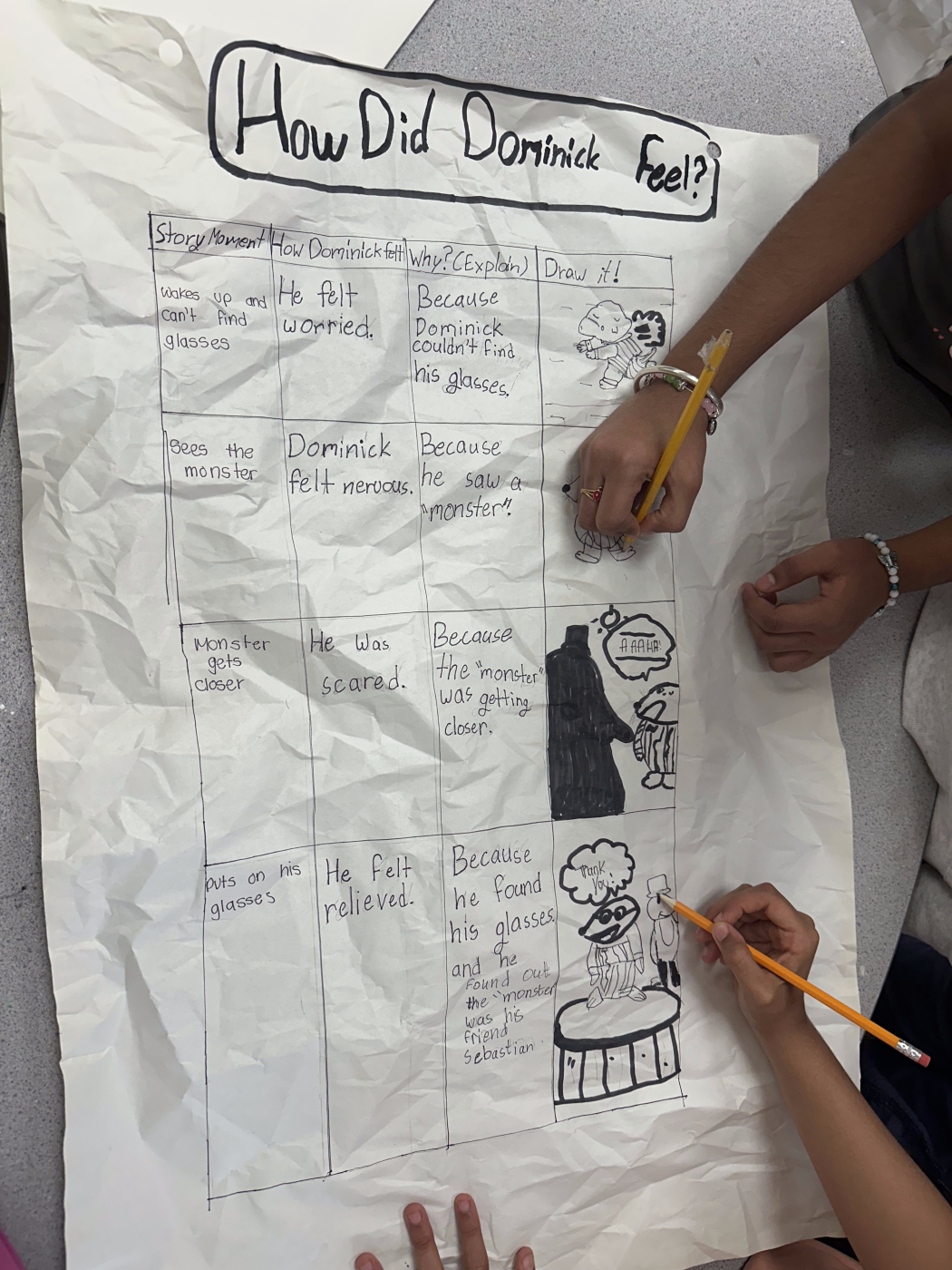 |
Our learners can talk and write about what they read and show they understand it well. |
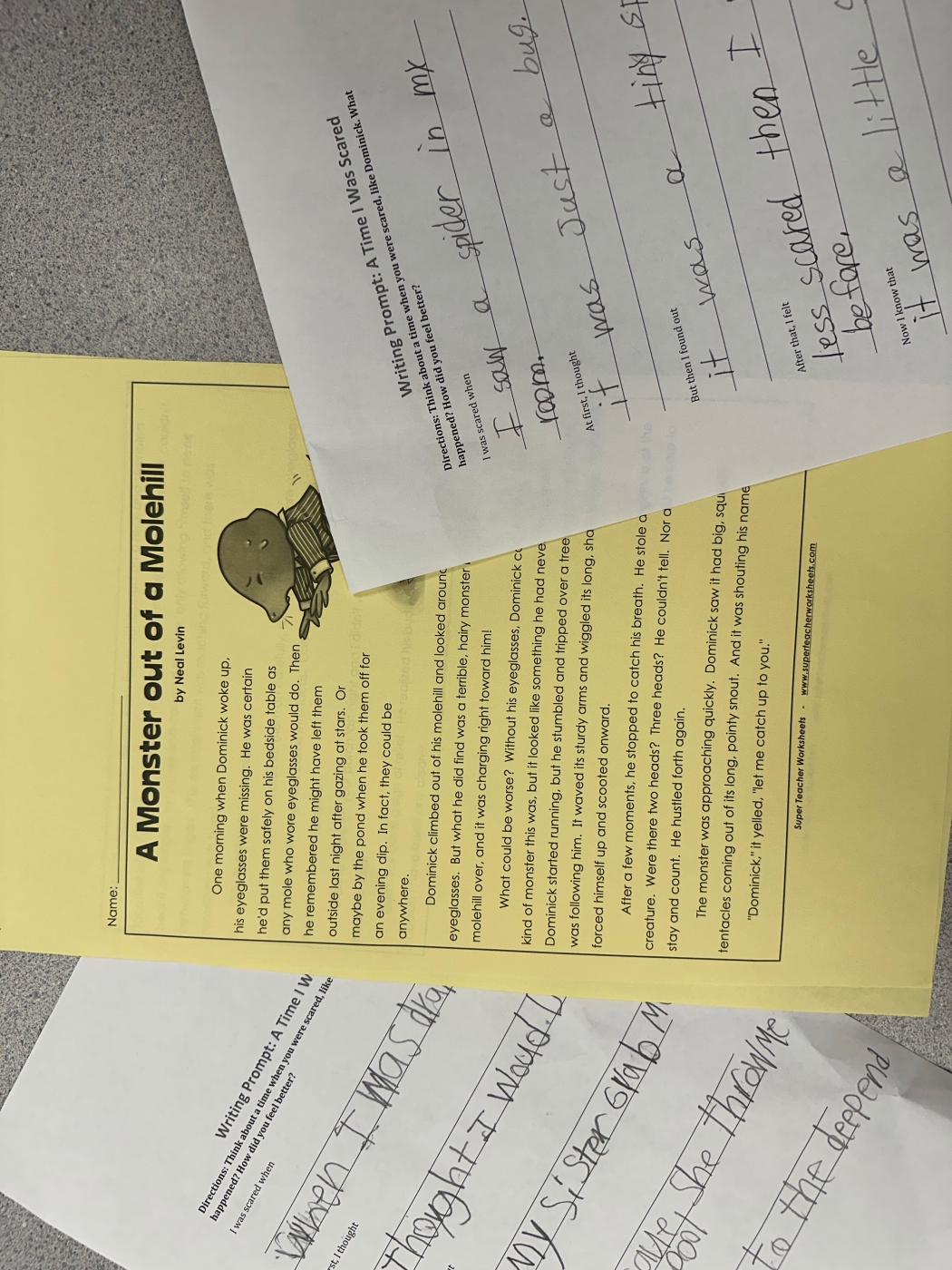
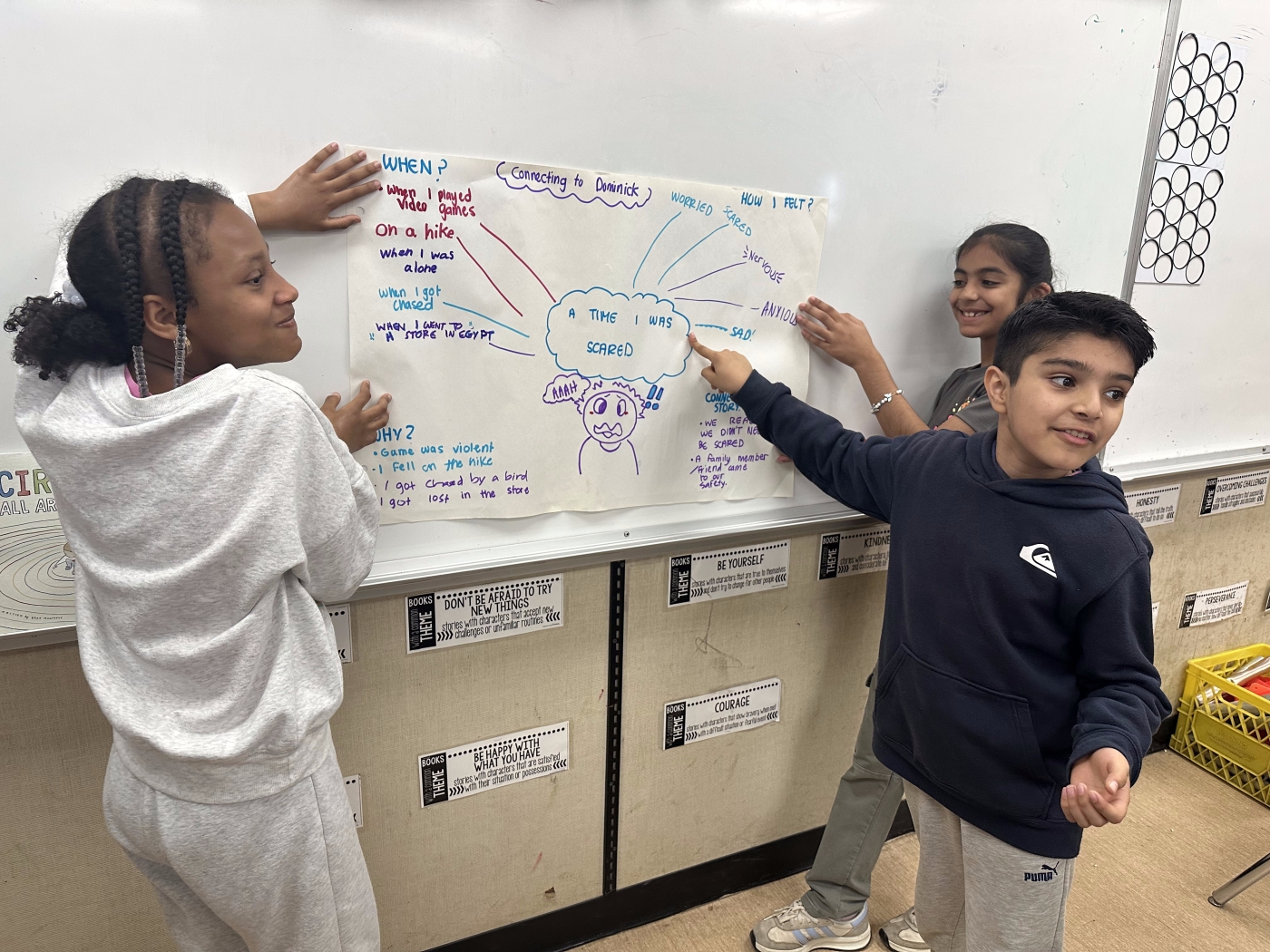
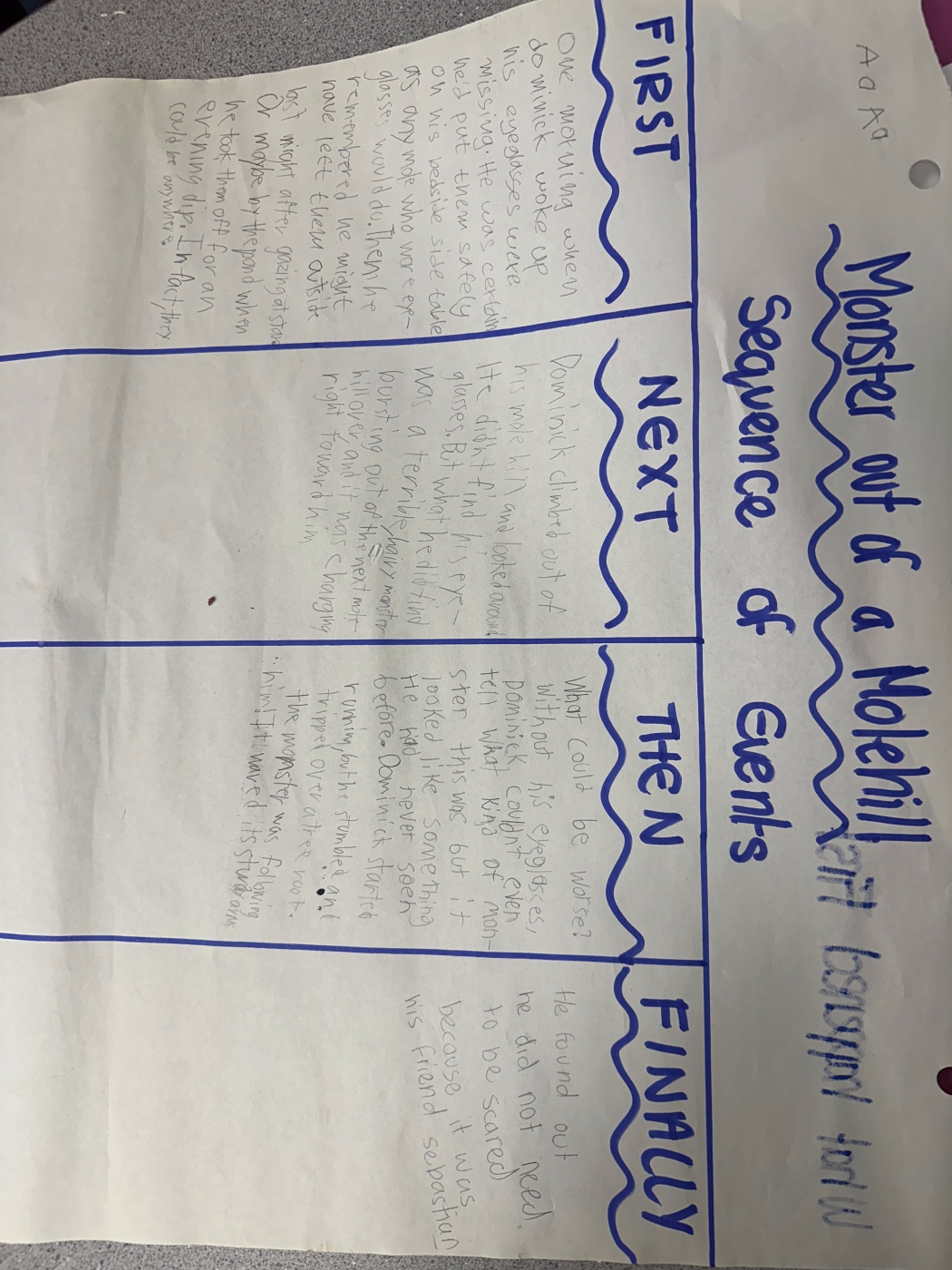
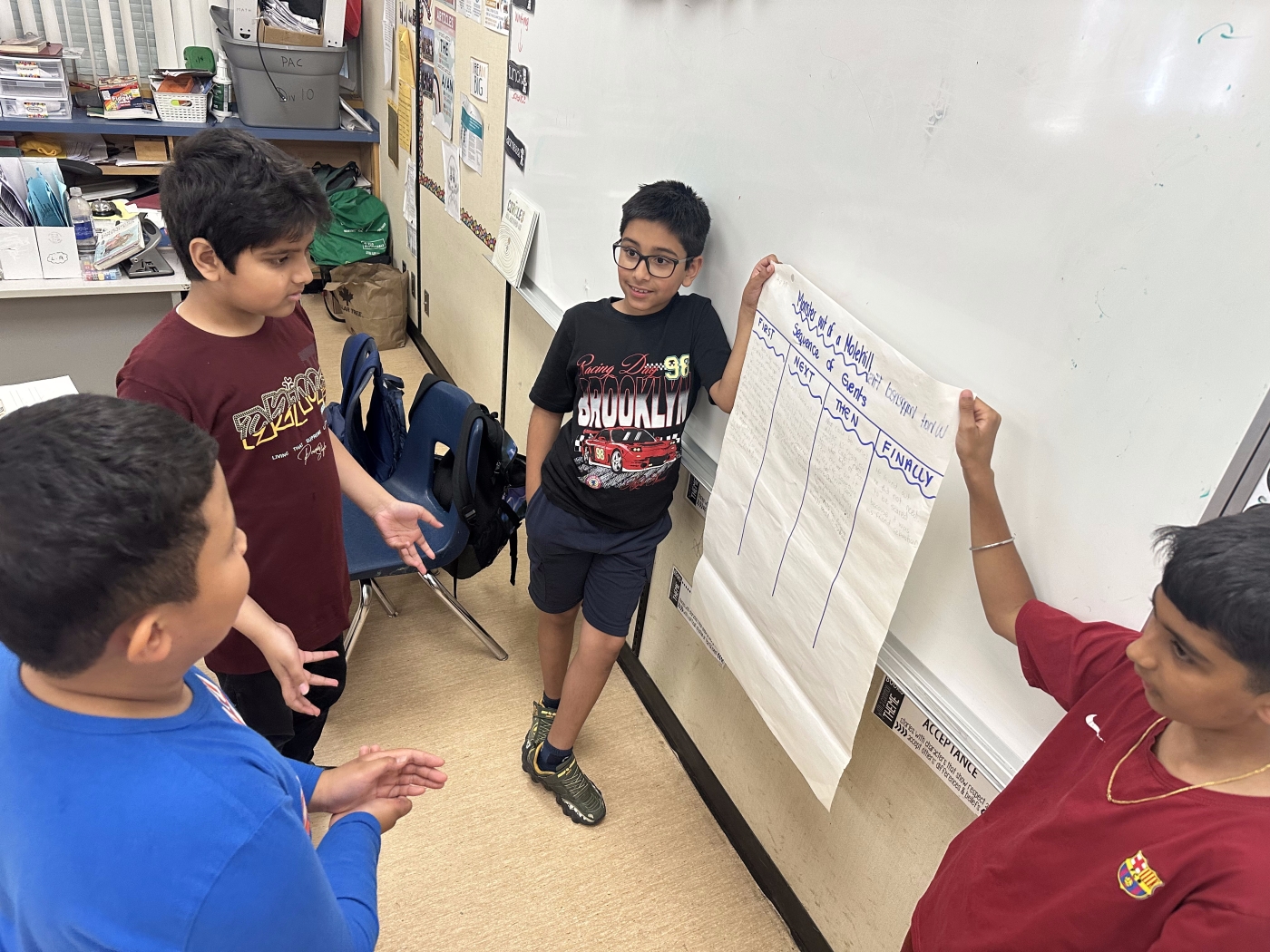
OUR FOCUS
Georges Vanier is dedicated to building strong literacy foundations for all our students. We focus on developing phonemic awareness and foundational reading skills, ensuring students can decode words and use effective strategies to understand what they read. We emphasize comprehension strategies, enabling students to deeply engage with texts and use reading as a tool for inquiry. This focus is crucial because strong reading skills unlock access to knowledge, foster critical thinking, and empower students to confidently navigate their learning journey. In our rapidly evolving world, where information is abundant and constantly changing, strong literacy provides students with the tools to discern credible sources, adapt to new information, and become lifelong learners who can thrive in any environment.
Our objectives for student learning goals in reading include:
Students can use developmentally appropriate reading strategies to decode texts and make meaning.
Students can read fluently at grade level.
Use a variety of comprehension strategies before, during, and after reading, listening, or viewing to guide inquiry and deepen understanding of text.
Throughout the school year, we've focused on targeted support and progress monitoring for three distinct student cohorts. We've closely observed the growth of a cohort of early primary learners, tracking their development in foundational reading skills and phonemic awareness. Simultaneously, we've worked with a cohort of Grade 3/4 students, analyzing their progression in comprehension strategies and their ability to engage with increasingly complex texts. Finally, we've monitored a Grade 6 cohort, evaluating their application of advanced reading strategies and their ability to use texts as tools for inquiry and deeper understanding.
Developing Phonemic & Phonological awareness (Early Primary Cohort)
We are working to give students the skills they need to be able to manipulate sounds and decode words fluently. This includes isolating sounds, blending sounds into words and changing sounds in a word to create a new word. All these skills combined will improve fluency skills when decoding.
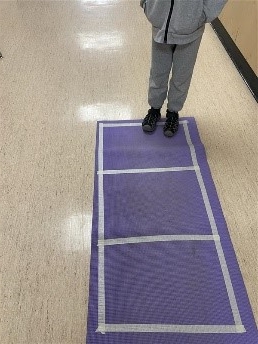
The student in the photo above is getting ready to segment a 3-phoneme word into its 3 sounds à bat into /b/ /a/ /t/ where each sound is in one of the boxes. This helps them to feel that each sound is separate.
In this board game depicted below, students change beginning, middle, and ending sounds to create new words (e.g., map to mat). They also identify which sound was changed (e.g., cut to cat). These activities help students understand how sounds form words in a fun way.
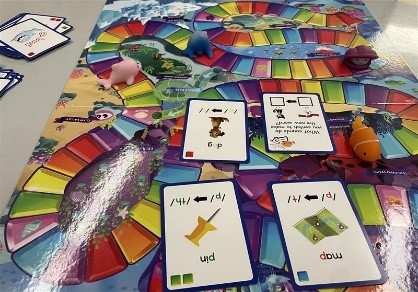
Once students can orally segment and blend sounds, and know the specific letters, we move on to fluency reading pyramids (seen below). These pyramids help students build fluency by reading words multiple times in a passage. They align with the UFLI lessons taught in class.
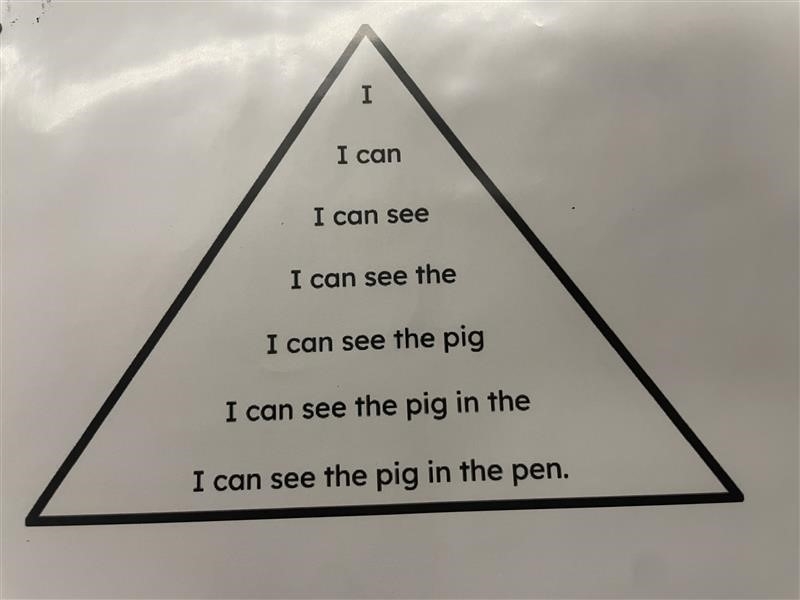
Upper Primary/Early Intermediate Cohort
The Upper Primary/Early Intermediate cohort consisted of 8 students. Some of these students were English Language Learners (ELL) who received pull-out learning support from an LST 2 to 3 times a week, and one Indigenous student received learning support from an LST 3 times a week along with support from an Indigenous Support Worker. Since September 2024, these students were assessed on their comprehension of the texts we read in class. Using Adrienne Gear’s Reading Power strategies, students were assessed on making connections, visualizing, and asking quick-thinking and deep-thinking questions to deepen their understanding. Using these strategies, students should be able to:
- Use personal experience and knowledge to connect to stories and other texts to make meaning
- Differentiate between quick-thinking and deep-thinking questions
- Visualize an image of the story to share their understanding
- Listen actively and engage with the story
- Answer comprehension questions related to the story
At the beginning of the school year, we introduced making connections to the stories we are reading to this cohort. We read aloud picture books such as “Rondo in C” by Paul Fleishman, ”Timothy Goes to School” by Rosemary Wells, “Don’t Be a Bully, Billy” by Phil Roxbee Cox, “The Recess Queen” by Alexis O’Neil, and “Chrysanthemum” by Keven Henkes, etc. to get the students engaged in the different themes of that time.
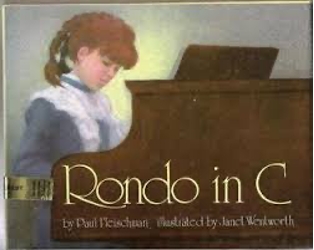
The next book we read was “Chrysanthemum”, which tied into our Social Studies curriculum about identity. This was also a book that we have a strong connection to. As I read along, I paused at areas where I had a connection, and I modeled using this language: “This part of the story reminds me of…” During this time, students were able to participate with a quiet connection by connecting their fingers together to form a “connection”. We did this for a few more picture books over the course of a week. Students were also introduced to other ways to make connections to books they read: text to self, text to text, and text to world. These different ways to connect were modelled while reading.
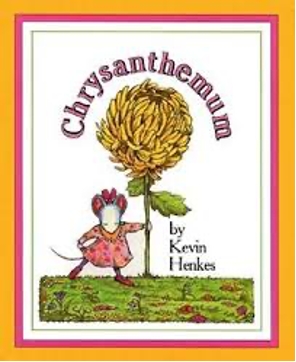
Once the students showed understanding, we moved onto guided group practice. Students were able to turn and talk to partner to share their different connection to the story. During our read aloud novel study of “The Wild Robot” by Peter Brown, we moved onto the idea of making a quick connection or a deep-thinking connection. We spent some time modelling these connections to the students so they could expand their thinking. Most students were good at making quick connections about the story but needed more practice with making deep-thinking questions.
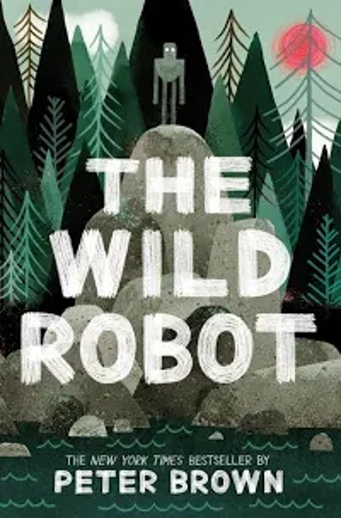 | 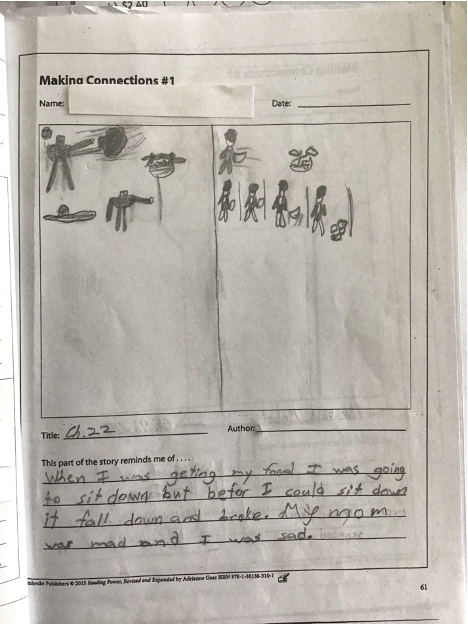 |
In term 3 we started a read aloud novel study of “Charlotte’s Web” by E.B. White. We noticed that with practice, more lessons, prompting, and time many students were able to demonstrate deep-thinking connections and were able to use other ways of connecting, like text to text, and text to the world.
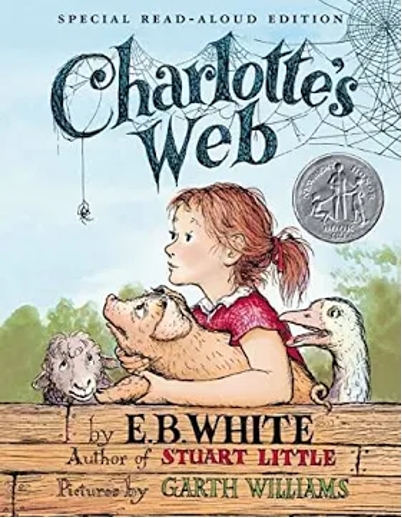 | 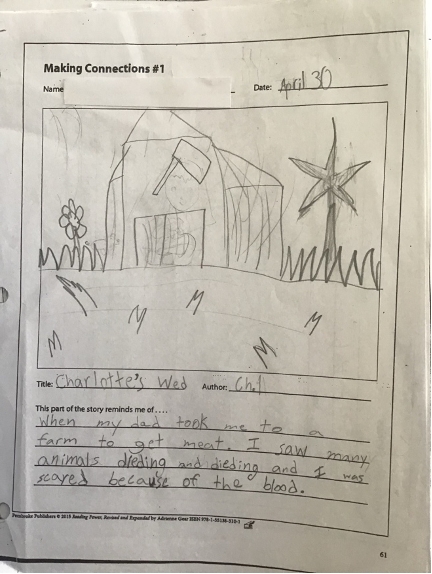 |
Upper Intermediate Cohort
A primary goal for our upper intermediate cohort (Grade 6) was to improve student reading comprehension by using a variety of comprehension strategies before, during, and after reading, listening, or viewing to guide inquiry and deepen understanding of text.
A grade 6 curricular competency, “apply appropriate strategies to comprehend written, oral, and visual texts, guide inquiry, and extend thinking,” helped guide our lessons by focusing on reading strategies such as questioning, predicting, previewing text, summarizing, and making inferences.
A significant portion of our cohort are English Language Learners (ELLs). Although many students demonstrated strong decoding skills, there was a need to strengthen their reading comprehension abilities.
1. Daily Comprehension Practice
Each morning, students completed a simple reading comprehension worksheet featuring a short passage and related questions. These worksheets targeted essential reading skills, including:
- Sequencing events
- Understanding author’s purpose
- Recognizing cause and effect
- Asking questions and making connections
Before beginning independently, students would read the passage together as a class and review any challenging vocabulary. Students then re-read the passage individually and answered the questions. Afterward, students reviewed answers as a class with the teacher, emphasizing strategies that led to correct responses. Over time, students demonstrated greater independence and accuracy in completing these assignments.
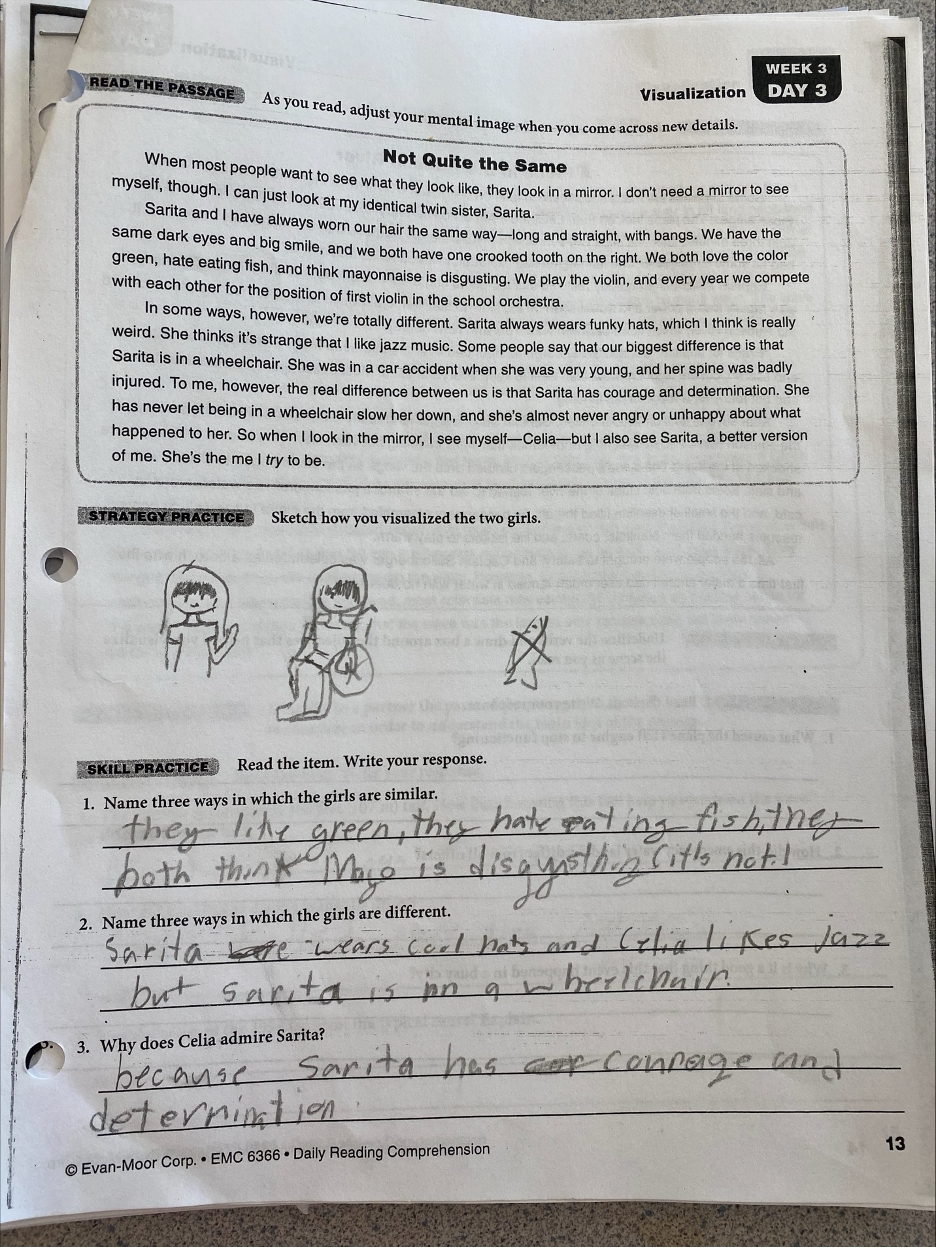 | 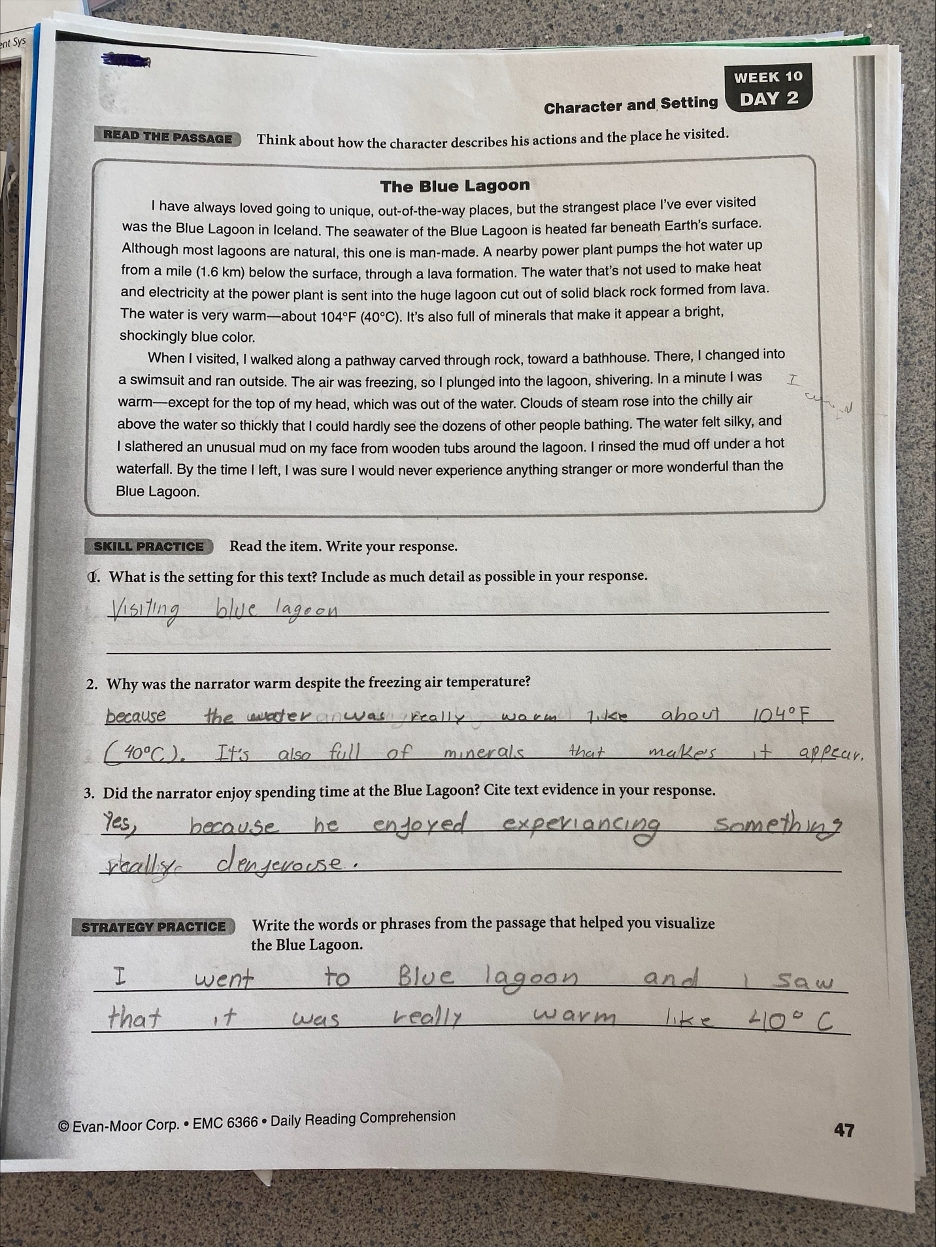 |
2. Guided Reading and Novel Studies
Guided reading was another effective strategy that was employed to deepen comprehension skills. Students were placed into leveled reading groups based on their reading levels. Within these groups, they engaged in novel studies designed to promote critical thinking and comprehension.
During small-group sessions, students read texts at their instructional reading levels—sometimes independently, sometimes with a teacher. Instruction focused on:
- Making predictions and connections
- Asking clarifying questions
- Decoding strategies
- Fluency
- Comprehension
- Summarizing and identifying key details
- Acquiring new vocabulary
At the end of the novel study, students collaborated to create a condensed “Coles Notes” version of their novel, which included:
- Setting
- Character traits
- Conflict and resolution
- Theme
Each student also wrote individual chapter summaries, incorporating new vocabulary into their writing. Here are some examples:
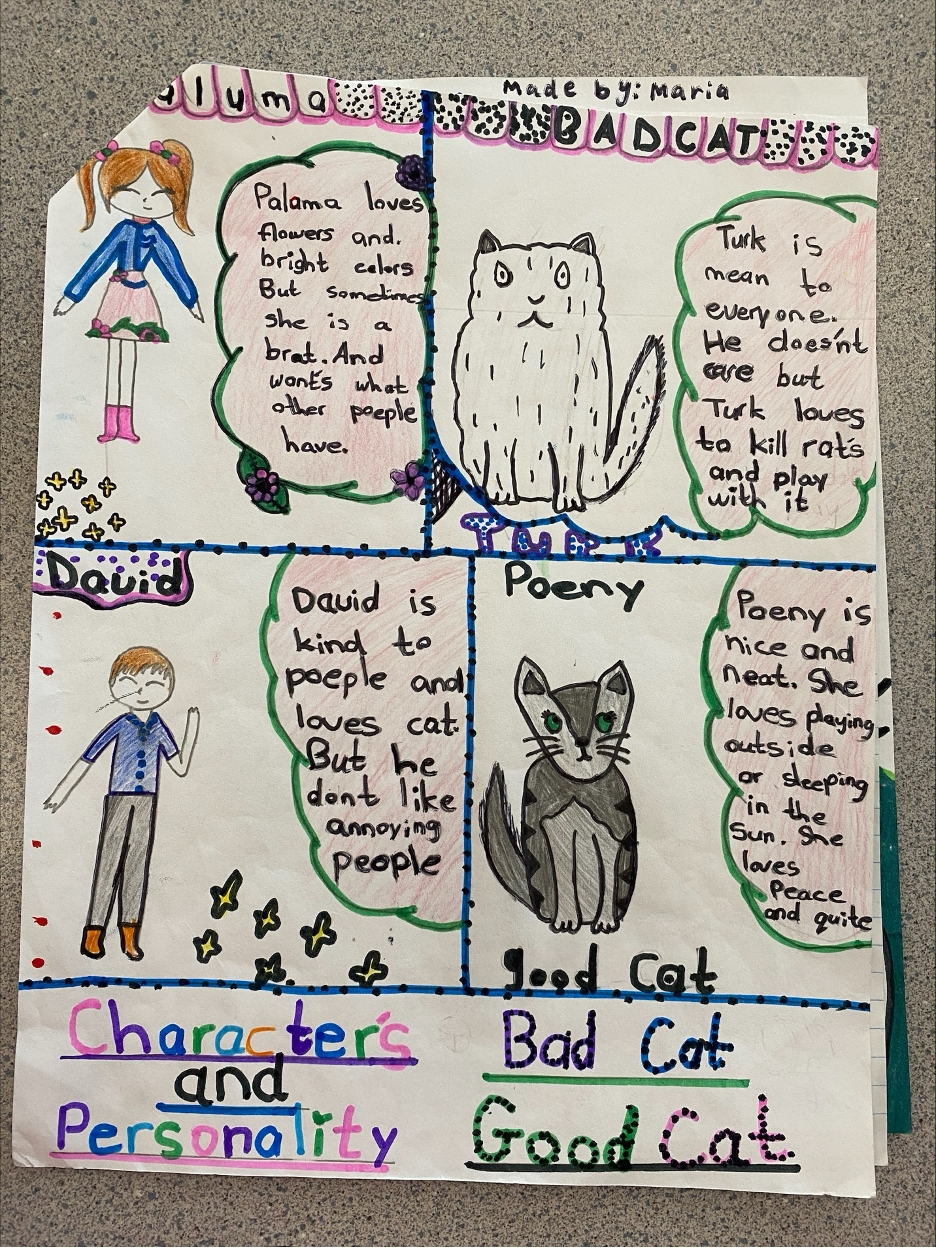 | 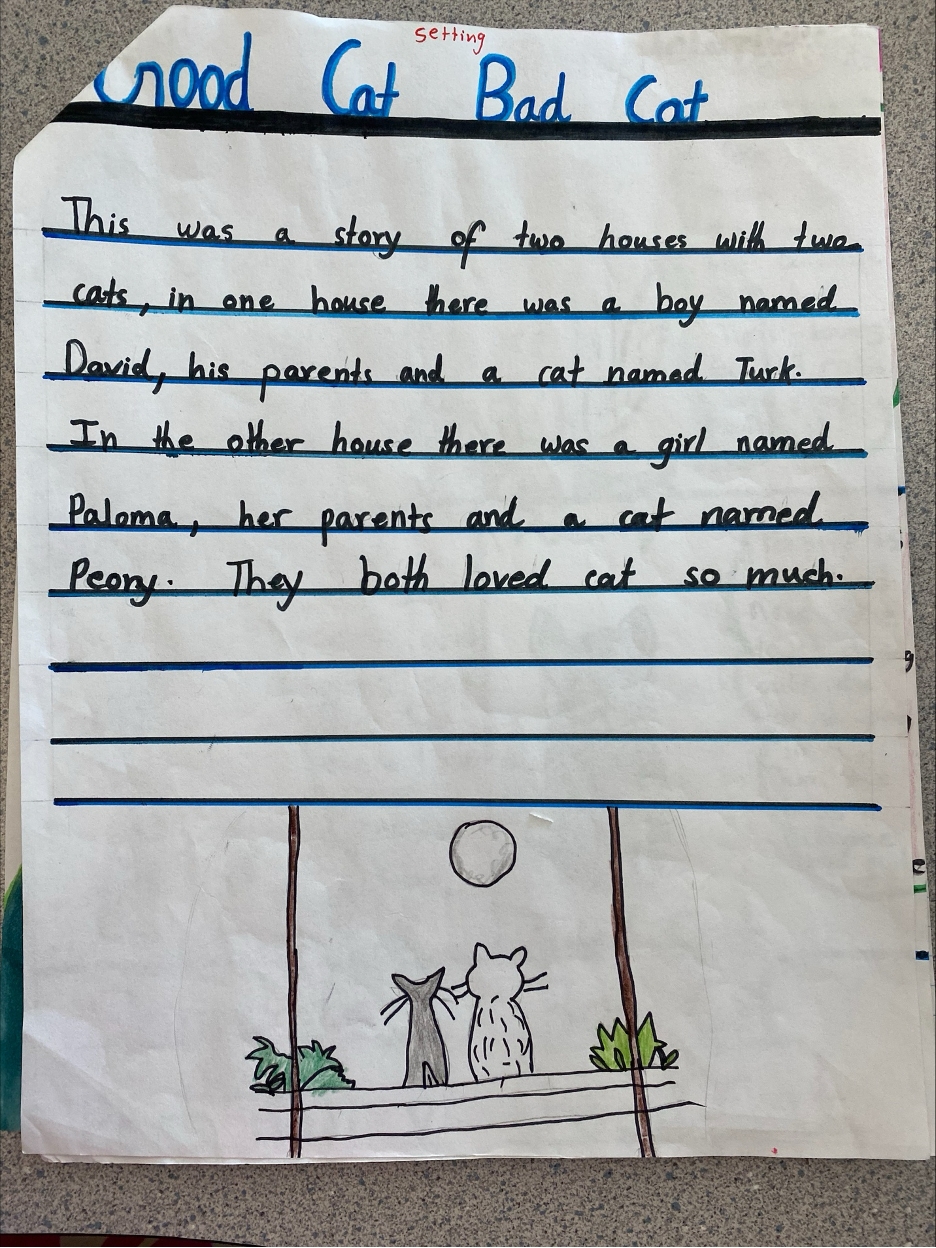 |
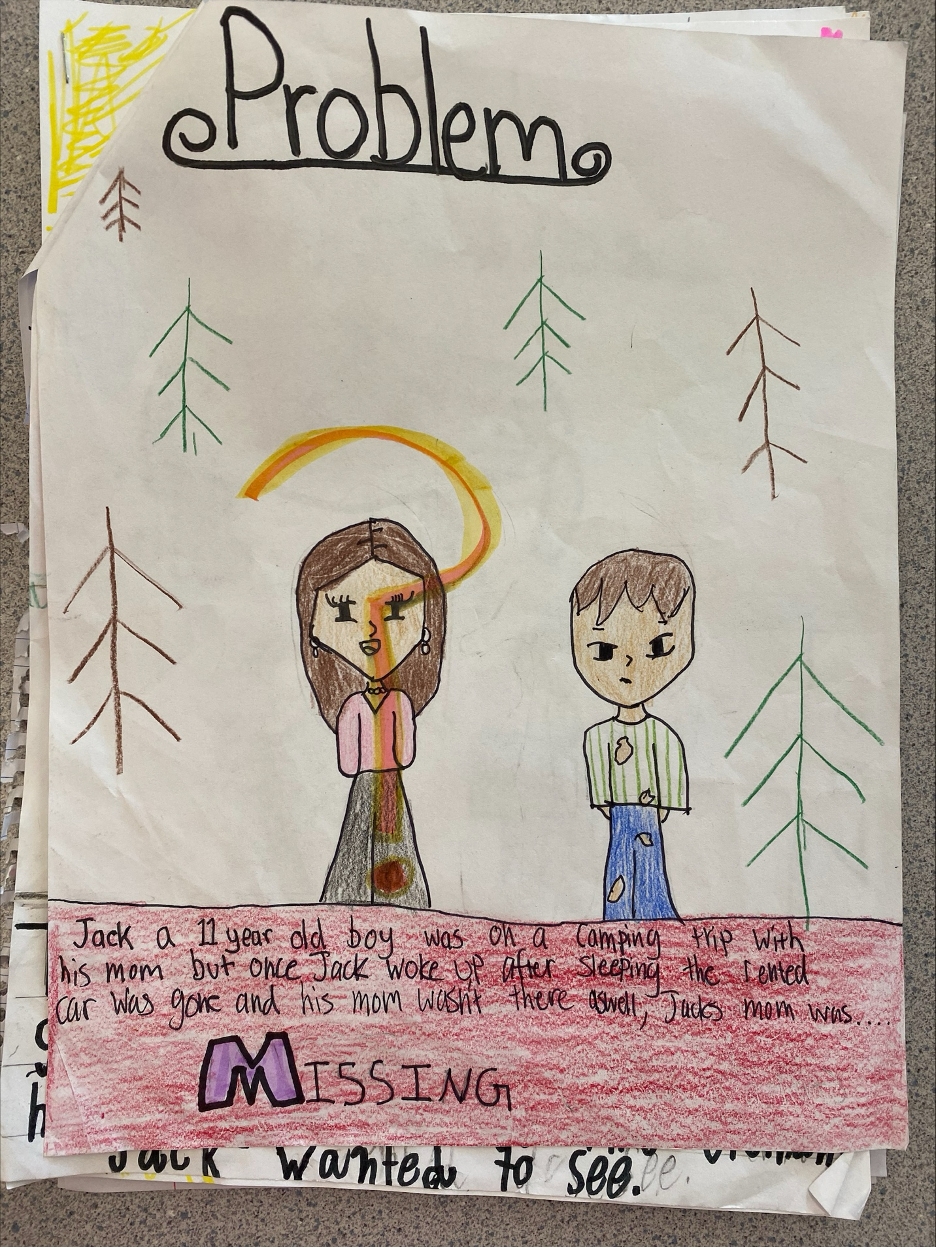 | 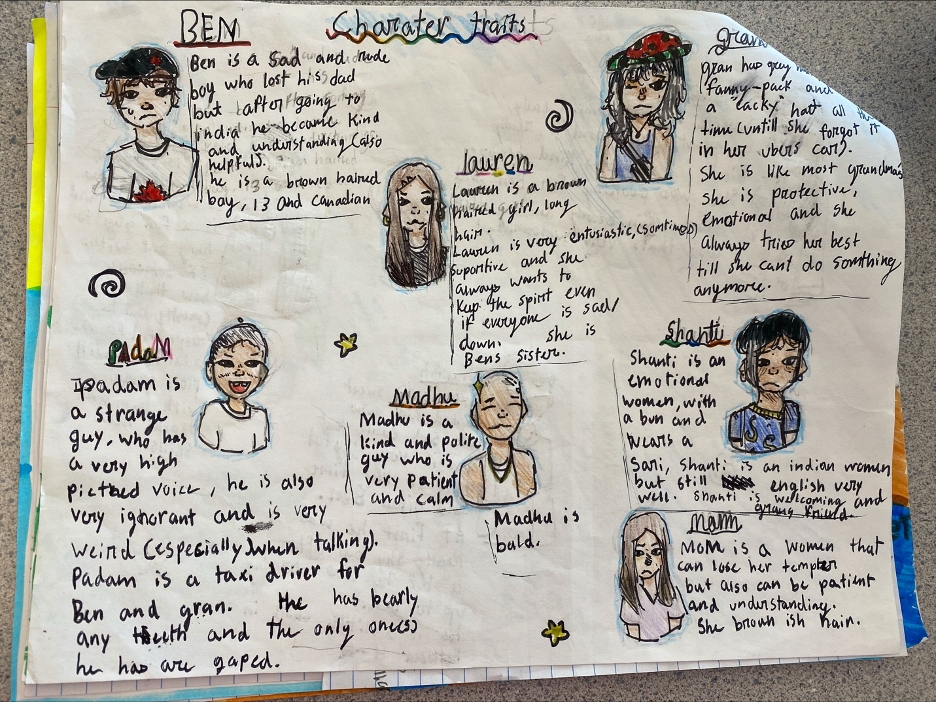 |
OUR NEXT STEPS
Early Primary Cohort
At Georges Vanier Elementary, this past year saw a focused and collaborative initiative to strengthen students' foundational literacy skills, particularly in letter sound recognition. This significant effort involved systematic assessment and targeted instruction across all Kindergarten and Grade 1 classes.
Our primary teaching team spearheaded the assessment process. Through a consistent method, students were shown individual letter cards, and their ability to identify the correct sound within 2-3 seconds was recorded. This initial data collection across all primary classes served as a crucial baseline to inform school-wide instructional planning.
Building on this data, Kindergarten and Grade 1 classroom teachers collaboratively implemented a variety of evidence-based teaching methods to address identified needs. These shared strategies included engaging letter sound games, dedicated letter sound learning centers, structured UFLI practice, whiteboard dictation, and individualized 1:1 incremental rehearsal, including specific support for English Language Learners (ELL).
Student growth was systematically monitored throughout the year. Primary teachers collectively maintained detailed spreadsheets, tracking progress from initial assessments, guiding targeted lessons informed by the data, and then conducting follow-up assessments a few months later.
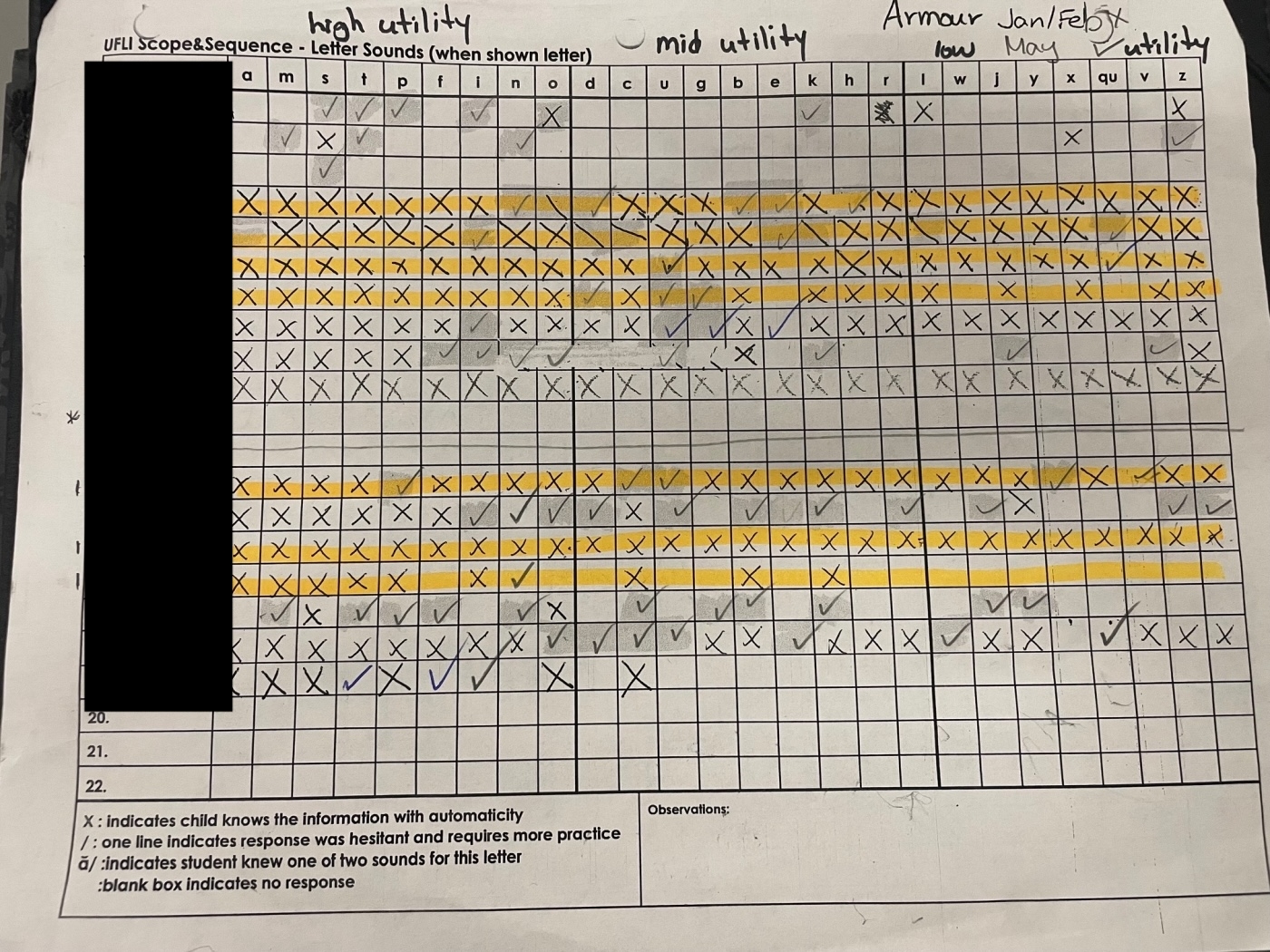 |
The letter sounds were categorized by utility:
- High Utility: a, m, s, t, p, f, i, n, o
- Mid Utility: d, c, u, g, b, e, k, h, r
- Low Utility: l, w, j, y, x, qu, v, z
Data for the Grade 1 cohort showed significant improvement:
- Fall data: Grade 1 students demonstrated recognition of 50% of high utility letter sounds, 36% of mid utility letter sounds, and 41% of low utility letter sounds.
- Spring data: By spring, their recognition increased substantially to 90% of high utility letter sounds, representing a 40 percentage point gain. Mid utility letter sound recognition rose to 76%, an increase of 40 percentage points, and low utility letter sound recognition also reached 76%, marking a 35 percentage point increase. This indicates substantial growth across all categories of letter sounds, reflecting the collective impact of our teaching strategies.
Data for the Kindergarten cohort also demonstrated substantial growth:
- Winter data: Kindergarten students knew 25% of high utility letter sounds, 13% of mid utility letter sounds, and 8% of low utility letter sounds.
- Spring data: By spring, high utility letter sound recognition grew to 64%, showing a 39 percentage point improvement. Mid utility letter sound recognition increased to 41%, a gain of 28 percentage points, and low utility letter sound recognition reached 25%, marking a 17 percentage point increase. These gains highlight strong foundational development in early literacy, a direct result of our primary team's dedicated efforts.
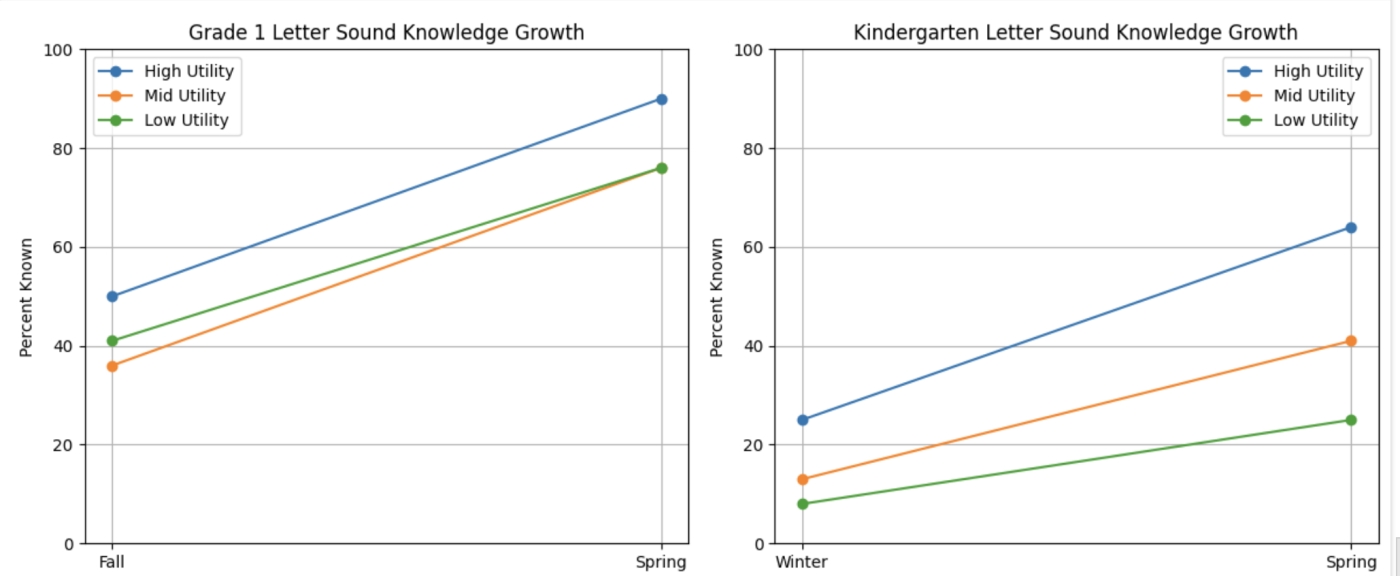 |
These data points illustrate the measurable progress achieved in letter sound recognition across both cohorts, reflecting the impact of targeted instruction and consistent assessment practices.
We want to take a moment to celebrate the incredible journey of an Indigenous student in one of our combined primary classes. This student joined our school community mid-way through the previous year and has since remained with the same dedicated teacher.
When the student first arrived at Georges Vanier, their speech was often difficult to understand, leading to frustrations when others struggled to comprehend them. Despite this challenge, the student quickly emerged as an empathetic leader within the classroom, particularly adept at helping peers solve problems.
Through hard work and remarkable persistence, this student has achieved significant gains across all areas of literacy. They now confidently know all their letter sounds, are able to decode words, read short passages and stories with increasing fluency, and can write multiple sentences – skills they did not possess upon their arrival last year. Their journey truly embodies the spirit of perseverance and success within our school community.
Upper Primary/Lower Intermediate Cohort
Students were assessed on making connections, visualizing, and asking quick-thinking and deep-thinking questions to make a better understanding. Using these strategies, students should be able to:
- use personal experience and knowledge to connect to stories and other texts to make meaning
- differentiate the difference between quick thinking and deep-thinking questions
- visualize an image of the story to share their understanding
- listen actively and engage to the story
- answer comprehension questions related to the story
When assessed, the following rubric was used:
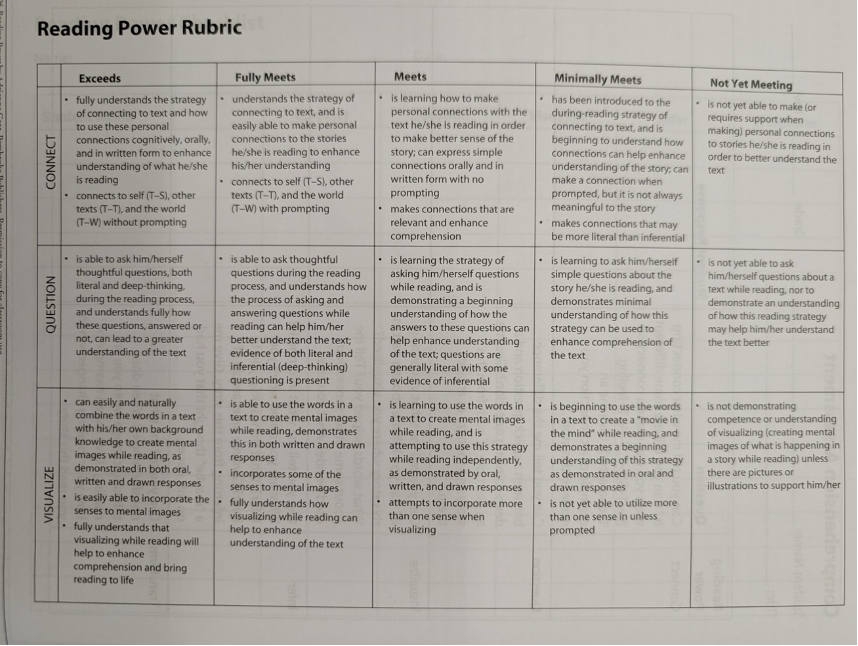
At the start of the year, only 32% of students were proficient in applying reading strategies independently. By the end of the year, that number rose to 41%, showing that more students had developed the confidence and skill to analyze texts on their own.
Meanwhile, the percentage of developing students increased from 23% to 36%. This growth suggests that many students who were once struggling are now able to make simple, unprompted connections in their reading—an important step toward deeper comprehension.
Most notably, the emerging group—students who were still building foundational skills—dropped dramatically from 55% to 23%. This significant decrease reflects strong progress in helping students grasp the basics of reading comprehension and move toward more independent understanding.
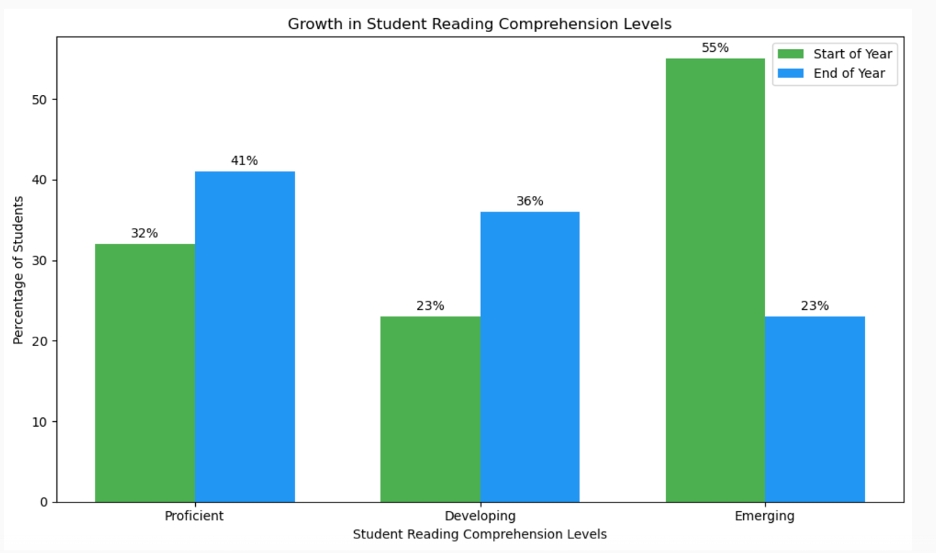
Together, these numbers tell a powerful story of growth: more students are moving up the ladder of comprehension, and fewer are left behind at the foundational level.
Upper Intermediate Cohort
Student learning was measured all year using teacher observations from class discussions as well as the rubric below:
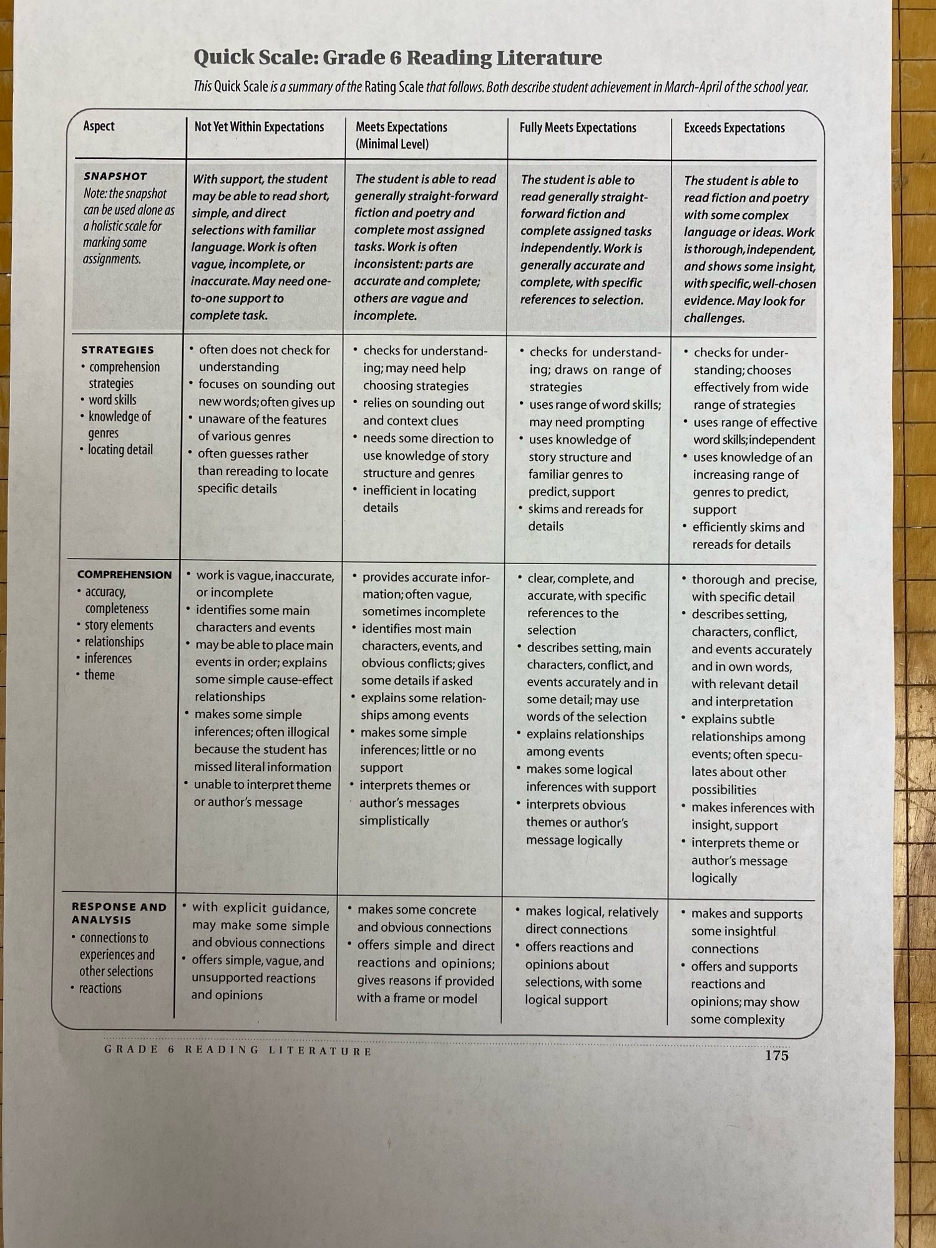
Students that are proficient (fully meets expectations) were able to describe setting, main characters, conflict, and events accurately. They were also able to interpret themes or author’s message logically.
Students that are developing (meets expectations) were able to identify most main characters, events, and obvious conflicts. They were also able to interpret themes of author’s messages simplistically.
Students that are emerging (not yet within expectations) were able to identify some main characters and events. Although, these students show some understanding of cause-effect, they were unable to interpret theme or author’s message.
Assessment from the rubric showed student growth in their use of strategies with reading comprehension and story elements.
At the beginning of the year (Term 1), only 33% of students were proficient in reading comprehension, while 48% were developing and 18% were still emerging. By Term 3, there was a noticeable shift: proficient students increased to 48%, showing a significant improvement in their ability to analyze story elements and interpret themes. Meanwhile, the percentage of emerging students dropped to 11%, indicating that many students moved up in their comprehension skills.
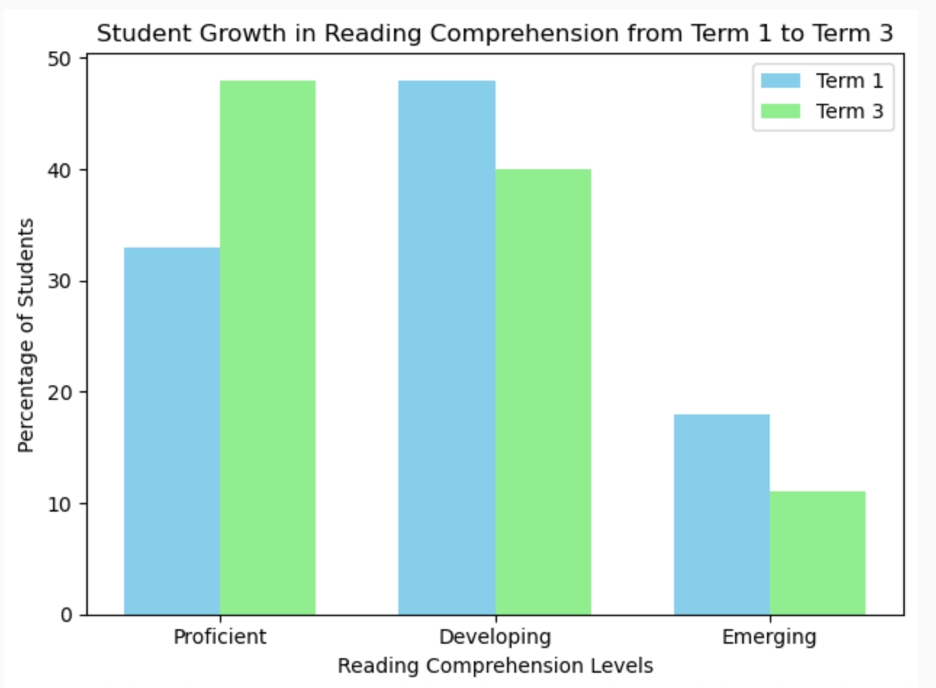
This graph tells a clear story of progress—students are not only improving their understanding of characters, settings, and conflicts but are also becoming more adept at interpreting deeper meanings in texts.
One notable success story is from one of our Indigenous students, who showed marked growth in both reading and comprehension. This student particularly benefited from consistent, one-on-one guided reading instruction. Regular, targeted support contributed to increased confidence and the ability to read independently with improved understanding. This student showed remarkable in their comprehension abilities when comparing their rubric from the first term to the third term.
Moving Forward
This past year marked our second year in the shift of our dual focus in Social Emotional Learning (SEL) and writing, with writing becoming the more significant emphasis. Staff remains excited and deeply committed to further solidifying their own understanding and proficiency in using more strategies and resources to move a greater number of students into a proficient writing ability.
Based on the significant progress we have already made, and following continued staff consultation and review, we have identified the following as our ongoing and future areas of focus for the upcoming year:
- Continued in-service and review of writing resources, utilizing various formats including Staff meetings, Lunch and Learns, and online methods.
- An enhanced and sustained focus on improvement with regard to the conventions of writing, as this continues to be an area of importance.
- Developing student self-assessment and goal-setting skills in writing, empowering them to take more ownership of their growth.
- Integrating technology purposefully to enhance the writing process, from brainstorming and drafting to editing and publishing.
As we approach our third year with these refined goals, our students and teachers will continue to work together, assess together, and implement the suggested methods noted above.
